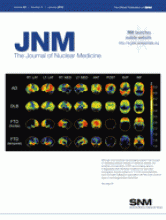Abstract
The objective of this study was to investigate the clinical impact of partial-volume effect (PVE) correction on the predictive and prognostic value of metabolically active tumor volume (MATV) measurements on 18F-FDG PET baseline scans for therapy response and overall survival in esophageal cancer patients. Methods: Fifty patients with esophageal cancer treated with concomitant radiochemotherapy between 2004 and 2008 were retrospectively considered. PET baseline scans were corrected for PVE with iterative deconvolution incorporating wavelet denoising. MATV delineation on both original and corrected images was performed using the automatic fuzzy locally adaptive Bayesian methodology. Several parameters were extracted considering the original and corrected images: maximum and peak standardized uptake value (SUV), mean SUV, MATV, and total lesion glycolysis (TLG) (TLG = MATV × mean SUV). The predictive value of each parameter with or without correction was investigated using Kruskal–Wallis tests, and the prognostic value was determined with Kaplan–Meier curves. Results: Whereas PVE correction had a significant quantitative impact on the absolute values of the investigated parameters, their clinical value within the clinical context of interest was not significantly modified—a result that was observed for both overall survival and response to therapy. The hierarchy between parameters was the same before and after correction. SUV measurements (maximum, peak, and mean) had nonsignificant (P > 0.05) predictive or prognostic value, whereas functional tumor-related measurements (MATV and TLG) were significant (P < 0.002) predictors of response and independent prognostic factors. Conclusion: PVE correction does not improve the predictive and prognostic value of baseline PET image–derived parameters in esophageal cancer patients.
- esophageal cancer
- response to therapy
- overall survival
- PET
- partial volume effects
- SUV
- tumor volume
- total lesion glycolysis
- © 2012 by the Society of Nuclear Medicine, Inc.







